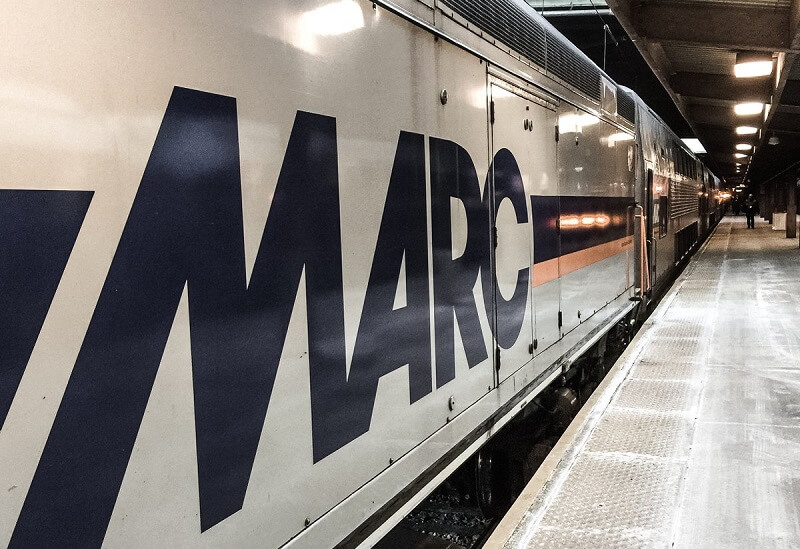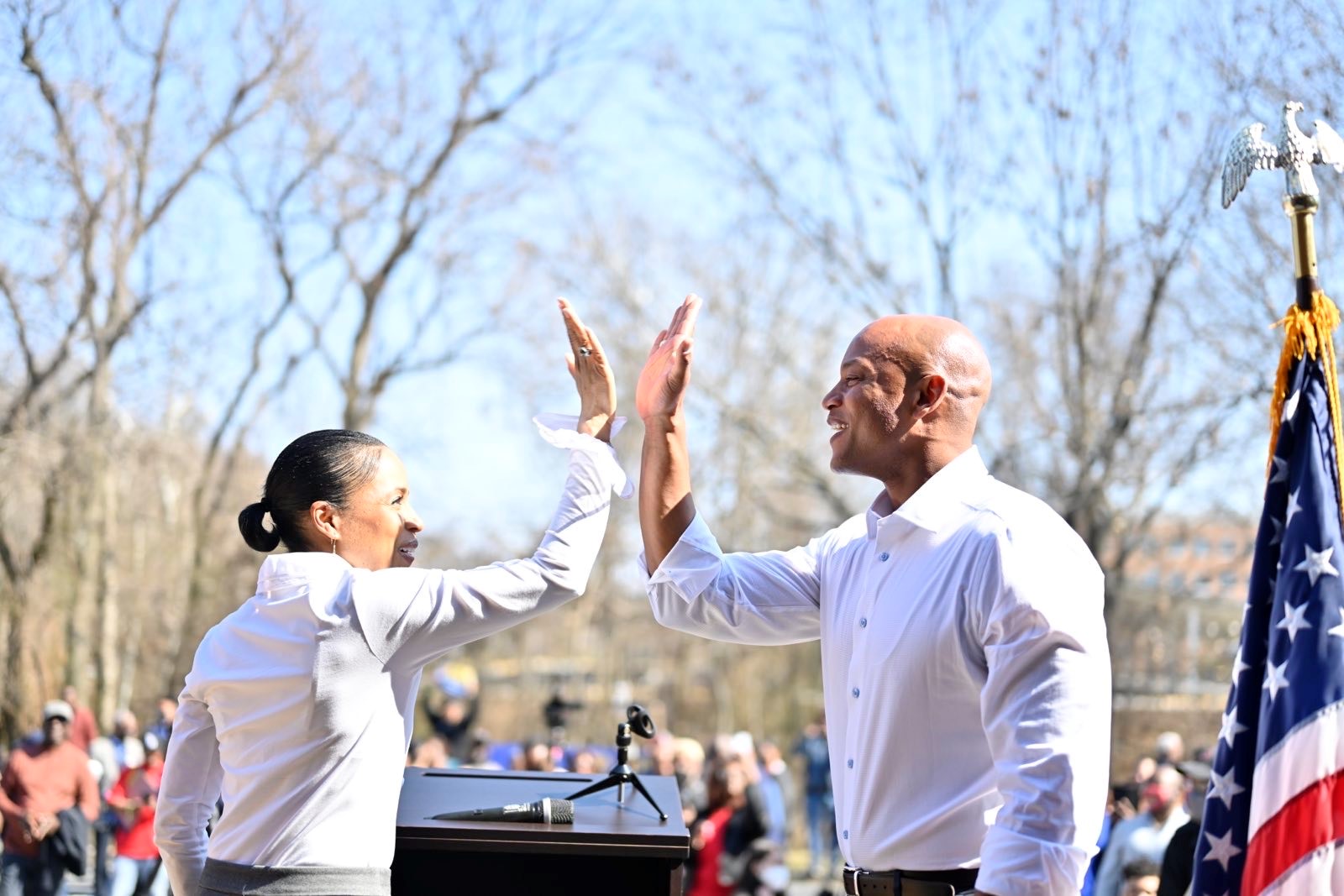Marylanders Fear Losing Federal Fight for Public Transit Cash

Congress is reviving long-stalled infrastructure negotiations that politicians hope will plow hundreds of billions of dollars into roads, bridges and public transit projects around the country.
But Gov. Lawrence J. Hogan Jr.’s administration has no immediate plans to expand public transit service beyond projects that are already under construction, frustrating Maryland lawmakers on Capitol Hill who fear their state could lose out as members of Congress vie for coveted federal infrastructure dollars.
It’s no secret that Hogan, a Republican, has been critical of certain proposed public transit spending. During his first year in office, he pulled the plug on the $2.9 billion Red Line light rail project in Baltimore, and he raised the prospect of doing the same for the Purple Line in Montgomery and Prince George’s counties, eventually greenlighting the project after getting more funding commitments from the two suburban counties. At the same time, Hogan has promoted the idea of expanding interstate highways to relieve congestion.
Last month, U.S. House Democrats released a plan to spend $760 billion over five years on infrastructure projects, including $105 billion for public transit. A bipartisan group of senators last year pushed forward a much less ambitious plan that is focused on transportation projects. President Trump has repeatedly called on Congress to pass a major infrastructure bill as well.
Previous infrastructure bills have stalled under Trump, but lawmakers must act this year to keep transportation money flowing to states, because the current surface transportation funding law for highways and transit expires at the end of the year.
Members of Maryland’s heavily Democratic congressional delegation said the lack of state plans undermines their efforts to bring transit money back to their home state, even if more money is allocated toward transit funding in a new transportation law.
“Our state has many transportation needs, and it is unfortunate that the governor has not prioritized transit projects beyond the Purple Line in his budgets,” said U.S. Rep. Steny H. Hoyer (D) in a statement. “If the governor doesn’t request funding for specific projects, it makes it difficult for the congressional delegation to advocate for federal funding.”
“Marylanders in Fifth District have one of the worst commutes in the nation, and the governor ought to be working with the local jurisdictions and congressional delegation to look at transit options to solve this critical issue,” Hoyer added, referring to his district, which takes in Southern Maryland and portions of Prince George’s County.
U.S. Rep. Anthony G. Brown (D), who lost to Hogan in the 2014 race for governor, also pressed the state to include more transit funding.
“Congressman Brown has consistently advocated for the expansion of new public transit for Maryland as a means of reducing congestion, reducing pollution, improving our local economies and connecting communities,” said Christian Unkenholz, a spokesman for Brown. “Rail, bus rapid transit, transportation demand management and telework are all … important ways to improve mobility. We should be actively pursuing these options as Maryland continues to grow.”
The state list of projects in the pipeline helps federal lawmakers make their case to the Federal Transit Administration and other agencies to fund certain projects.
Almost all federal transportation money, though, either flows through state governments or, as a practical matter, requires the state’s cooperation to come through.
‘Record investments’
The Hogan administration, however, says it is supporting “record investments in transit.”
The Maryland Department of Transportation released a statement saying it is identifying new “cornerstone plans to identify the next generation of transit projects” and is working to develop a 25-year transportation plan for the Baltimore area.
The agency also noted that it has expanded bus service to destinations including the business district near BWI Marshall Airport, the Guinness Brewery and to Tradepoint Atlantic in Baltimore County, which is the home of employers such as Amazon, FedEx and Under Armour. It has also installed 5.5 miles of dedicated bus lanes in the Baltimore area.
“MDOT looks forward to continued collaboration with all our partners across the state to build our statewide transit system,” the agency’s statement said.
Still, MDOT’s latest six-year transportation plan, which was released in the fall, is striking. The plan angered Montgomery County lawmakers because it initially dropped support for the Corridor Cities Transitway, a proposed rapid-bus line which could have eased congestion along Interstate 270 north of Shady Grove. Eventually, MDOT added the project back to its priority list but did not provide any new funding. While the county can now seek federal funding for the project even without state dollars, there are no other plans to add new transit service in Maryland.
The Hogan administration’s plan does include money for infrastructure improvements for transit, but none of those would expand routes to new destinations. So, for example, Maryland plans to spend money to add train storage facilities, improve tracks on MARC routes, upgrade a few stations, overhaul older coaches and trains and roll out federally mandated safety technology to prevent train collisions and derailments.
Ben Ross, the chairman of the Maryland Transit Opportunities Coalition, said it was a “surprise” that the Hogan administration did not include at least some modest service improvements in its plan. Transportation projects, especially ones that use federal money, take years to plan before work can begin, he noted.
Ross said there are plenty of relatively small and uncontroversial projects the Hogan administration could have started work on that could lead to marked improvements in service.
The state could, for example, add a MARC station at Johns Hopkins Bayview, just east of Baltimore Penn Station, he said. It is a link to one of the city’s biggest job centers and was originally slated to be on the Baltimore Red Line. Connecting the area to MARC would be a boost to the local economy and the environment, Ross said.
Ross also suggested building a new platform at the Point of Rocks station, near where MARC’s Brunswick and Frederick lines split. Currently, the station only serves the Brunswick line, but if the platform connected to the Frederick line, too, it would increase rail service to the area.
A third possibility would be the next phase of an environmental study for the long-discussed Southern Maryland Rapid Transit project, a light rail line that would connect the Branch Avenue Metro station, just inside the Capital Beltway with White Plains in Charles County. Residents in Southern Maryland have been pushing the project since the 1990s but have made a renewed push for the project after Bloomberg News called their commute the worst in the nation.
These “are really nonpartisan things,” Ross said. They are “incremental improvements that are clearly economically beneficial, have no opposition and cost in the low 10s of millions of dollars.”
But Ross did give the governor credit for eventually supporting the Purple Line, which is now under construction, and for increasing Maryland’s financial support for infrastructure improvements with the Washington Metro system.
Daniel C. Vock is a Washington correspondent for States Newsroom. He can be reached at [email protected].



 Creative Commons Attribution
Creative Commons Attribution